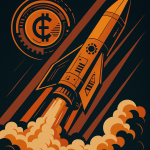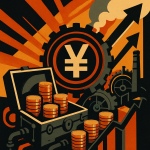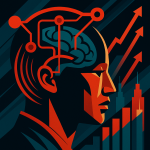China’s economy showed resilience and steady improvement in the first three quarters of 2025, with GDP up 5.2% year‑on‑year and Q3 growth at 4.8%.
Source: National Bureau of Statistics (Guójiā Tǒngjìjú 国家统计局)
Quick snapshot — headline numbers to bookmark
Preliminary GDP for Jan–Sep: ¥101,503.6 billion RMB (¥101.50 trillion RMB, $14.10 trillion USD).
GDP growth Jan–Sep: +5.2% year‑on‑year.
Quarterly trend: Q1 +5.4%, Q2 +5.2%, Q3 +4.8% (Q3 vs Q2 +1.1% quarter‑on‑quarter).

Why this matters — the macro narrative
Under the stated leadership and a policy mix of “稳中求进” (stability with progress), officials prioritized domestic circulation, supportive macro policy, and targets for high‑quality development.
That translated into steady production, stable employment and prices, expansion of new growth drivers, and targeted social protections.
For investors and founders, that means a macro backdrop that favors tech, advanced manufacturing and service‑oriented plays while weighing risks from external demand.
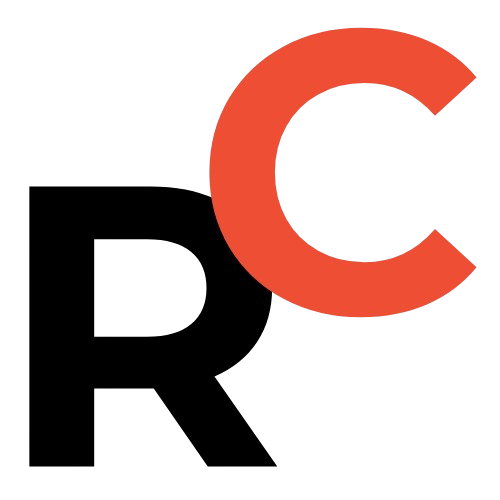
Resume Captain
Your AI Career Toolkit:
- AI Resume Optimization
- Custom Cover Letters
- LinkedIn Profile Boost
- Interview Question Prep
- Salary Negotiation Agent

GDP sector breakdown — where value is coming from
Value added by sector (Jan–Sep):
- Primary industry: ¥5,806.1 billion RMB (¥5.81 trillion RMB, $0.81 trillion USD).
- Secondary industry: ¥36,402.0 billion RMB (¥36.40 trillion RMB, $5.06 trillion USD).
- Tertiary industry: ¥59,295.5 billion RMB (¥59.30 trillion RMB, $8.24 trillion USD).
Simple share check (approx.):
- Tertiary (services) accounts for roughly 58.4% of GDP — a clear services‑led structure.
- Secondary (industry) is about 35.9% — manufacturing still a heavyweight.
- Primary (agriculture) sits near 5.7%.
Implication: Services and modern consumption already dominate, but industry and high‑tech manufacturing remain critical for exports and capex flows.

1) Agriculture — stable harvests, livestock steady
Primary value added rose 3.6% year‑on‑year.
Summer and early‑season rice combined production: 178.25 million tonnes (+0.1%).
Pork, beef, mutton and poultry Jan–Sep totaled 73.12 million tonnes (+3.8% year‑on‑year).
Key livestock notes: pork +3.0%; beef +3.3%; poultry +7.2%; mutton −4.3%.
Hog breeding herd at end‑Q3: 436.8 million head (+2.3%).
Takeaway for agri‑tech and food investors: stability in core output and rising poultry suggests room for supply‑chain plays and precision agriculture tools.

Find Top Talent on China's Leading Networks
- Post Across China's Job Sites from $299 / role, or
- Hire Our Recruiting Pros from $799 / role
- Qualified Candidate Bundles
- Lower Hiring Costs by 80%+
- Expert Team Since 2014
Your First Job Post

2) Industry — solid expansion; equipment & high‑tech lead
Industrial value added for enterprises above designated size: +6.2% year‑on‑year.
By category: mining +5.8%; manufacturing +6.8%; utilities +2.0%.
Standouts: equipment manufacturing +9.7%; high‑tech manufacturing +9.6% — both growing markedly faster than the industrial average.
Big winners in output growth (YoY): 3D printing equipment +40.5%; industrial robots +29.8%; new energy vehicles +29.7%.
Manufacturing PMI in September: 49.8 (slightly improved), and business expectations index 54.1.
Industrial profits Jan–Aug: ¥4,693.0 billion RMB (¥4.69 trillion RMB, $651.8 billion USD; +0.9% YoY).
Investor focus: advanced manufacturing, automation, EV supply chain — these are the clear growth corridors.

ExpatInvest China
Grow Your RMB in China:
- Invest Your RMB Locally
- Buy & Sell Online in CN¥
- No Lock-In Periods
- English Service & Data
- Start with Only ¥1,000

3) Services — modern services are the engine
Service sector value added: +5.4% year‑on‑year.
Fastest subsectors: information transmission, software & IT services (+11.2%); leasing & business services (+9.2%); transportation & warehousing (+5.8%).
IT and software production in September: +12.8%; financial services +8.7%.
Operating income for services enterprises Jan–Aug: +7.7% YoY.
Services activity index: 50.1; business expectations index: 56.3.
Why it matters: Digital services, SaaS, fintech, logistics and B2B business services are expanding faster than headline GDP and are prime targets for founders and VCs.

4) Consumption — retail sales rising; online and upgraded spending stand out
Total retail sales Jan–Sep: ¥36,587.7 billion RMB (¥36.59 trillion RMB, $5.08 trillion USD; +4.5% YoY).
Online retail: ¥11,283.0 billion RMB (¥11.28 trillion RMB, $1.57 trillion USD; +9.8% YoY), accounting for 25.0% of total retail sales.
Goods and catering split: goods retail ¥32,488.8 billion RMB (+4.6%); catering ¥4,098.9 billion RMB (+3.3%).
Durables and upgrade categories showing strong gains: household appliances & audio‑video +25.3%; furniture +21.3%; communications equipment +20.5%.
September retail: +3.0% YoY; service retail +5.2% YoY.
Investor signal: e‑commerce, premium consumer brands, trade‑in models and experiential services are accelerating, driven by replacement cycles and online penetration.

5) Investment — mixed picture; manufacturing capex is healthy
Fixed‑asset investment Jan–Sep: ¥37,153.5 billion RMB (¥37.15 trillion RMB, $5.16 trillion USD; −0.5% YoY).
Excluding real estate, fixed‑asset investment: +3.0%.
Infrastructure +1.1%; manufacturing +4.0%; real estate development −13.9%.
Private investment −3.1%; private investment excluding real estate +2.1%.
High‑tech capex highlights: information services +33.1%; aircraft/aerospace equipment +20.6%; computers & office equipment +7.4%.
Interpretation: while property is contracting, productive investment — especially tech and manufacturing — is growing, signaling a structural shift in capital allocation.

6) Trade — goods trade grew, export mix improving
Jan–Sep imports & exports: ¥33,607.8 billion RMB (¥33.61 trillion RMB, $4.67 trillion USD; +4.0% YoY).
Exports: ¥19,945.0 billion RMB (¥19.95 trillion RMB, $2.77 trillion USD; +7.1%).
Imports: ¥13,662.9 billion RMB (¥13.66 trillion RMB, $1.90 trillion USD; −0.2%).
Private enterprises accounted for 57.0% of total trade, up 2 percentage points.
Mechanical & electrical products: 60.5% of exports, up 9.6% YoY.
Trade with Belt and Road Initiative (Yīdài Yīlù 一带一路) countries rose 6.2%.
Takeaway: export resilience and an improving trade structure support industrial demand and global supply‑chain strategies.

7) Prices — CPI weak but core inflation firming; PPI contraction easing
CPI Jan–Sep: −0.1% YoY; in September CPI was −0.3% YoY and +0.1% month‑on‑month.
Core CPI (ex food & energy) Jan–Sep: +0.6%; September core CPI: +1.0% YoY.
PPI Jan–Sep: −2.8%; September PPI: −2.3% (narrowing decline).
Implication: weak headline inflation but rising core inflation suggests domestic demand pockets and cost pressures in non‑food sectors — relevant for monetary and corporate pricing strategies.

8) Employment — stability with modest improvement
Average urban surveyed unemployment Jan–Sep: 5.2%.
September urban surveyed unemployment: 5.2% (down 0.1 ppt month‑on‑month).
Rural workers working away from home end‑Q3: 191.87 million (+0.9%).
Message for startups and HR teams: labor market is stable but competitive; focus on retention, upskilling and productivity gains to attract talent.

9) Incomes — steady gains, rural incomes rising faster
National per‑capita disposable income Jan–Sep: ¥32,509 RMB ($4,513 USD; nominal +5.1%, real +5.2%).
Urban per‑capita: ¥42,991 RMB ($5,971 USD; nominal +4.4%, real +4.5%).
Rural per‑capita: ¥17,686 RMB ($2,456 USD; nominal +5.7%, real +6.0%).
Median per‑capita disposable income: ¥27,149 RMB ($3,768 USD; nominal +4.5%).
Insight: rising rural incomes and stronger growth in services support more diversified consumption opportunities beyond tier‑1 cities.

Assessment & outlook — what to watch next
The policy stance is to consolidate the domestic recovery, support jobs, firms and expectations, and push for high‑quality development.
Risks remain—particularly external demand uncertainty—so policymakers emphasize proactive macro policy and targeted supports.
Practical signals for investors and founders:
- Watch sectors: high‑tech manufacturing, equipment manufacturing, IT/software, logistics and new energy vehicles.
- Capex trend: manufacturing & high‑tech investment is stronger than headline fixed‑asset trends.
- Consumption plays: online retail, premium durables and service retail are gaining share.
- Trade & exports: mechanical & electrical products and private enterprise exporters are durable contributors.
Linking opportunities: connect corporate pages and investor notes to the National Bureau of Statistics report for citations and to the sector breakdowns in the references below for credibility.

Practical takeaways for decision makers
- Founders: prioritize product‑market fit in digital services, industrial automation and EV ecosystems.
- Investors: look for capex beneficiaries and software platforms serving manufacturing and logistics.
- Marketers: lean into online channels — online retail is already 25% of total retail sales.
- Policy watchers: real estate contraction vs. manufacturing growth signals allocation shifts the next 12 months.
All USD conversions use ¥7.20 RMB = $1 USD (rounded) as noted in the official figures.

References
- 前三季度经济运行稳中有进 高质量发展取得积极成效 – National Bureau of Statistics of China (国家统计局)
- 前三季度GDP同比增长5.2% 三季度增长4.8% – 东方财富网
- Xinhua News Agency – xinhuanet.com
Final line: this snapshot shows China’s economy continuing a steady, services‑led recovery with industrial and high‑tech investment as key engines — keep watching these pockets for the next wave of opportunities in China’s economy.

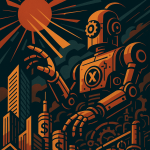
![China Sets New Rules for Direct-to-Satellite Mobile Services: What You Need to Know [FreshFromChina]](https://freshfromchina.com/wp-content/uploads/2025/05/China-Sets-New-Rules-for-Direct-to-Satellite-Mobile-Services-What-You-Need-to-Know___FreshFromChina-150x150.png)
